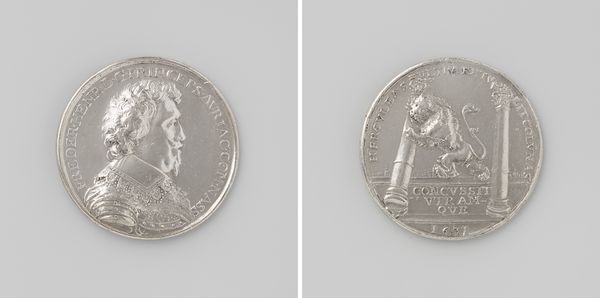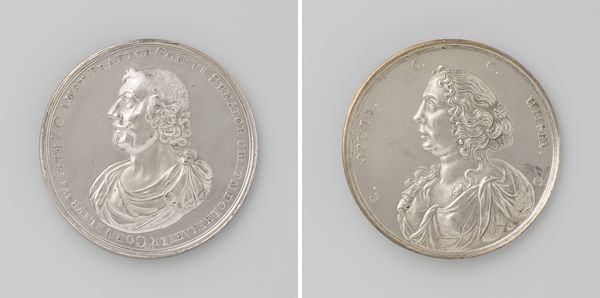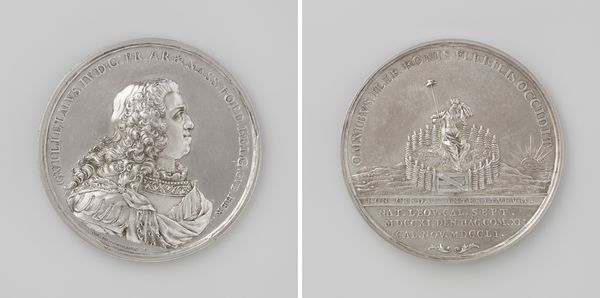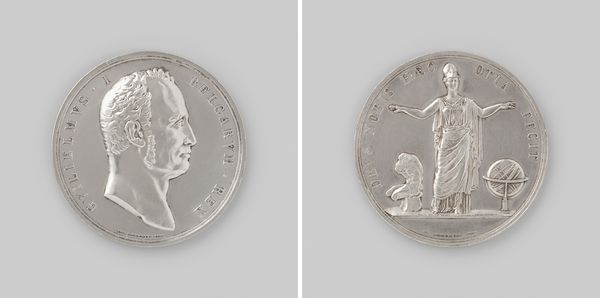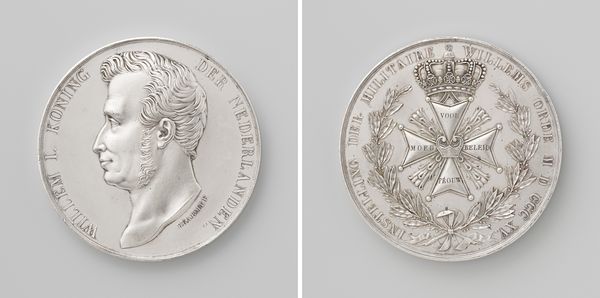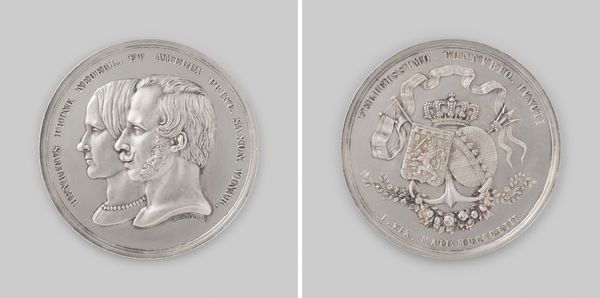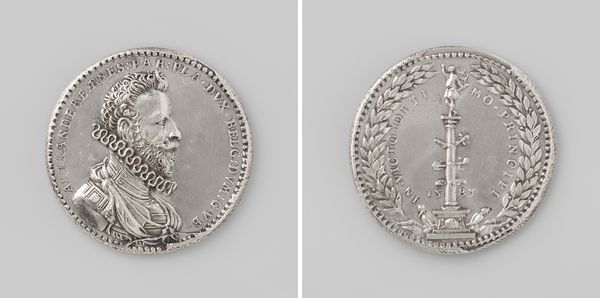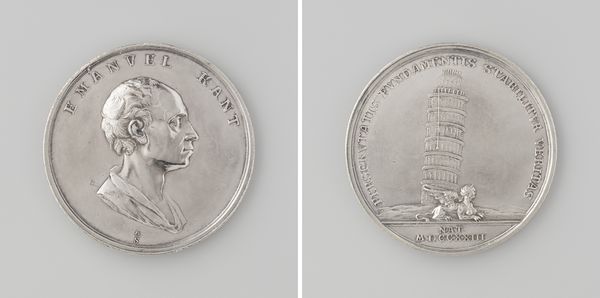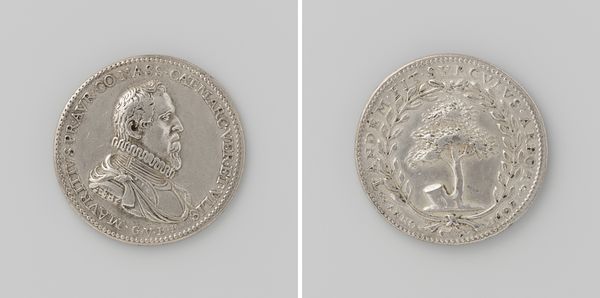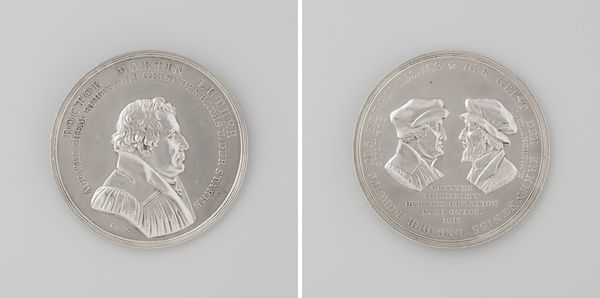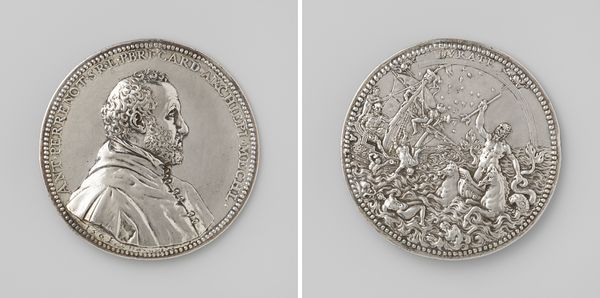
Concordaat tussen paus Leo XII en Willem I Frederik, koning der Nederlanden 1827
0:00
0:00
silver, print, engraving
#
portrait
#
neoclacissism
#
silver
# print
#
geometric
#
history-painting
#
engraving
Dimensions: diameter 4.7 cm, weight 434 gr
Copyright: Rijks Museum: Open Domain
Curator: This work, dating from 1827, is entitled "Concordaat tussen paus Leo XII en Willem I Frederik, koning der Nederlanden," which translates to "The Concordat between Pope Leo XII and William I Frederick, King of the Netherlands." Editor: The cool austerity of the silver gives this a very formal, almost commemorative feel, don’t you think? Curator: Absolutely. This piece, created by Franciscus Johannes de Hondt, memorializes a political agreement, a concordat. I am instantly reminded of the way gender is negotiated here – how masculine authority is materially coded through portraiture, and how class relations dictated the artistic creation of it. It's pure Neoclassicism! Editor: And it's fascinating to consider this from the perspective of the engraver’s labor. It's incredibly detailed work; you see it across the portraits and symbols that decorate the back of the medallion. To execute this precisely would have required great skill and time. Curator: True! And the visual language employed is so purposeful. Look at how the two portraits are placed, almost face to face, suggesting both dialogue and perhaps, subtle power dynamics. Consider what their relationship signified at the time this artwork was created – how did the power dynamics between religion and governance affect marginalized communities? Editor: Yes, and if you flip the coin to the other side, the imagery with the tree, rays of light, geometric shape and keys… I find it really quite strange. And then it says "Benignitas Sac.," sacred kindness. Almost contradictory! I think about how that very tangible preciousness gets conferred on agreements that materially impacted real people’s everyday life, who of course have little power over this elite world. Curator: The choice of silver too is fascinating, as are those motifs and geometric details, embedding those historical moments within layers of symbolisms…it also begs the question: how does art normalize such agreements, particularly when seen through a modern, critical lens? Editor: A lot to digest from one small object, isn't there? Curator: Indeed. This little piece invites big questions, highlighting how deeply enmeshed art and politics can be. Editor: A really excellent case study of artistic production within power dynamics and labour of creation!
Comments
No comments
Be the first to comment and join the conversation on the ultimate creative platform.

